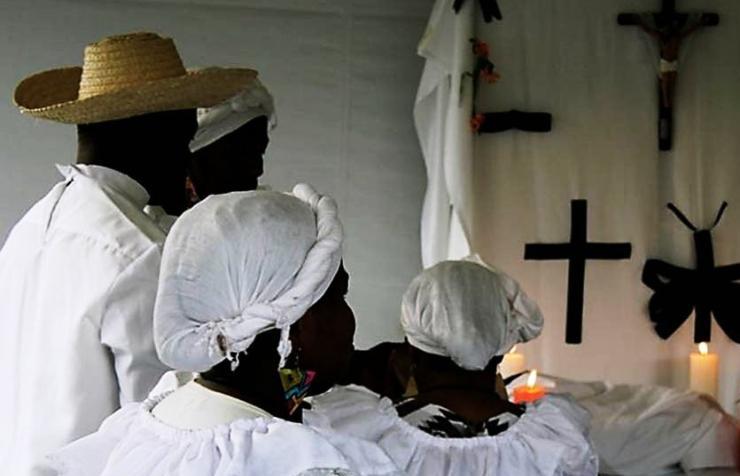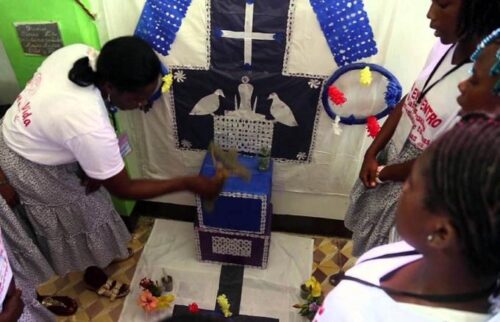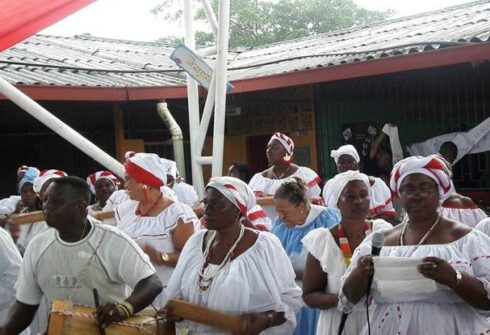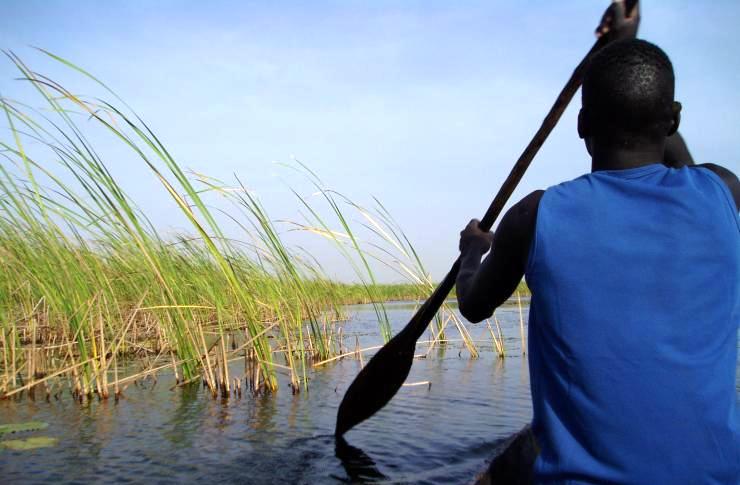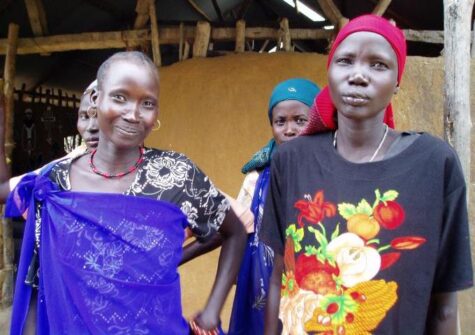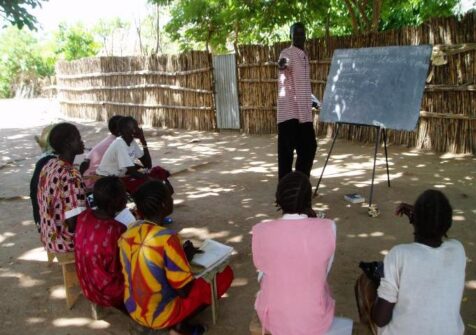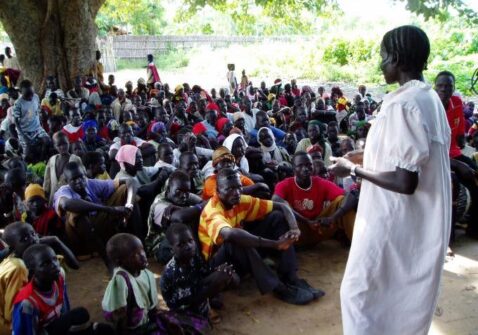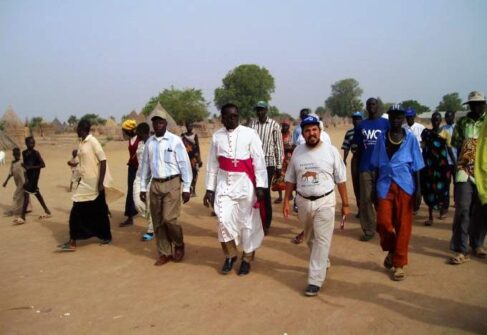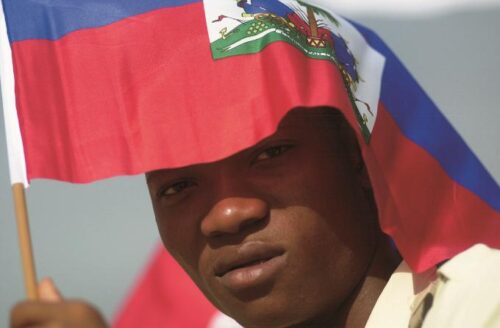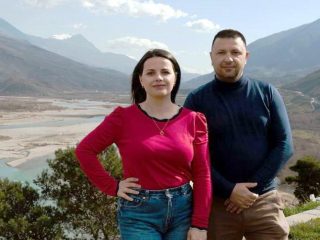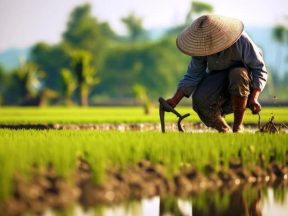The Hare and the Elephant.
One day the hare, feeling hungry, went to look for food. Now, although he was full of mischief, the hare was also very lazy, and whenever he could conveniently do so, he took life easily and let others toil while he benefited from their labours.
After aimlessly wandering about the bush, hoping that he could scrounge a meal from some trusting creature, the hare came upon the village of the forest dwellers. At first it seemed deserted and he went from hut to hut, searching in vain for food.
At last he saw an elephant seated beside a fire, carefully stirring the contents of a large three-legged pot. The hare sniffed the smell of cooking beans. “Good morning,” he said in his sweetest tones, his little nose quivering with delight.
“Why are you sitting alone on this bright and sunny morning?” “Go away – replied Njovo, the Elephant -. I am busy. It is my duty day today, and I am cooking food for those who hoe the lands.”
The hare, who was quite vain about his personal appearance, carefully smoothed his glossy coat and stroked his whiskers.
Then he sat down cross-legged opposite the elephant. With his chin cupped in his two paws, he gazed at the giant of the forest for a long time without speaking.
Then he said with a sigh of admiration, “Now that I have seen you, I know that all I have heard about you is true. Never until now did I believe that you could have such beautiful long hair. Would you allow me to stroke it, and feel its thickness and its strength?”
The elephant had little to be proud of as far as his appearance was concerned, but he could boast of one thing: he had a long mane of coarse black hair that fell over his shoulders. All the other elephants were extremely jealous of this rare growth. So the flattery of one who was as opinionated as the hare made Njovo tremble with joy.
“Certainly, certainly – he replied -. You are most welcome.” The hare stood on tiptoe and gently began to caress the elephant’s hair, running his sharp little claws through the strands with the most soothing
strokes to the thick skin.
“What lovely tresses – he purred -. Let me plait them for you.”
The elephant closed his eyes in enjoyment, and the hare began to sing a little song as he plaited the big creature’s hair. And slowly the elephant sank to the ground as he became more and more drowsy until, with a long sigh of bliss, he fell into a deep sleep.
With a wicked chuckle, the hare immediately set to work and wound the long, thick hair round a nearby tree, tying the elephant down securely. He then turned to the pot of well-cooked beans, and scooped up one tasty handful after another until it was finished. Then he carefully replaced the lid on the pot and skipped off. He was well pleased with himself, and firmly intended returning the following day for another meal of delicious beans.
At midday the animals returned from a hard morning’s work in the fields. They were hungry and ready for their lunch. As they came into the clearing, they saw Njovo waking up. He stretched himself and tried to rise . . . but he could not, because his hair held him down. A roar of laughter greeted his struggles as he sank helplessly to the ground again. The giant of the forest, tied by his own hair! It would take a long time before he would be allowed to forget it.
Still teasing the elephant, the hungry animals took their places round the cooking pot and one of them lifted the lid. There was not a bean left! The animals were flabbergasted. Who could have stolen the food from under the elephant’s very nose? Then he confessed to them the whole story of the cunning of the hare. Although the animals laughed at the trick that had been played on Njovo, they made up their minds that they would set a trap for the wicked hare, and so take their revenge for the loss of their food.
The following day the animals made their preparations. They instructed the tortoise to stay behind and cook the food, because he was renowned for his wisdom, and they felt that he would be able to deal with the hare if he came. Then they left for the lands to hoe their fields once more.
Sure enough, not much time had passed before the hare came sauntering down the path to the village with his thumbs tucked under his armpits, and his sensitive nose testing the wind for the smell of cooking beans. He walked slyly, because he knew that the animals would be on the look-out for him after the trick he had played on the elephant the day before.
But there was no one! The place appeared to be completely deserted, and the pot of beans was bubbling away gently on its own. “Oh, what a luscious smell – chuckled the hare -. How very kind of my good friends to prepare food for me.” As he said this, he sat down on a low bark stool that was standing beside the pot. He lifted the lid and scooped out a handful of beans, which he sniffed with delight. “Cooked to a turn,” he murmured as he opened his mouth to pop in the food.
But what was that? The beans dropped to the ground as the hare’s feet were gripped as if in a vice, and a voice said, “We have caught you this time, my friend!”
“Let me go, let me go, you piece of bark – shrieked the hare. “Can’t you see the owners of the beans coming? Of course, I can see them coming – laughed the voice -, and they will help me to kill you!”
At this the hare burst into tears. “Don’t kill me. Please don’t kill me!” he sobbed. “What, not kill you, when you rob us of our food?” the angry animals cried as they came running up to the fire. They at once set upon the hare with sticks and stones while the tortoise – for it was on his back that the hare had sat – continued to hold him firmly by the hind legs.
After the first few blows had been struck, the hare’s body went limp and he rolled his eyes as if he were dying. Seeing this, the animals laughed and said, “You can let go of his feet now, Tortoise. The boaster dies quickly. Leave him.”
So, they left the hare for dead, and turned their attention to the pot of beans. The hare lay quietly until he thought the animals had forgotten all about him. Then, getting up very carefully, he silently and stealthily crept to the edge of the forest. Once out of danger of pursuit, the rascal shouted, “You can’t catch me, or kill me either. Did you really think that I was dead, foolish ones?” And his chuckles grew fainter and fainter as he ran out of sight into the forest.
Folktale from Bemba people of Northen Zambia











